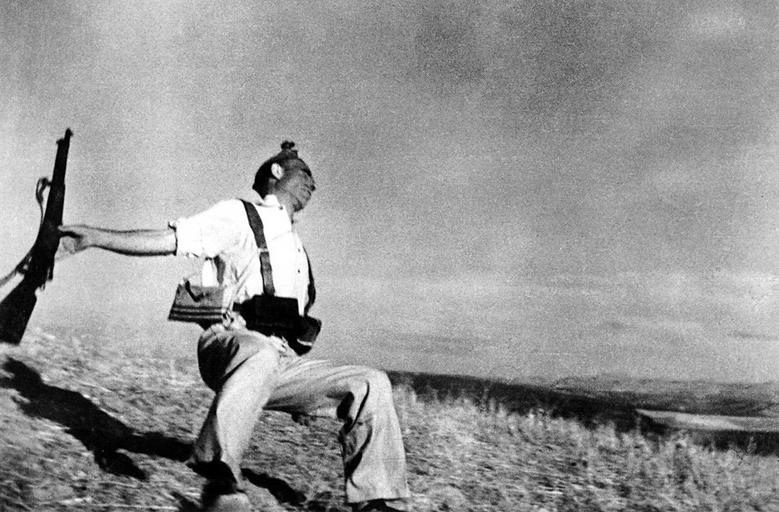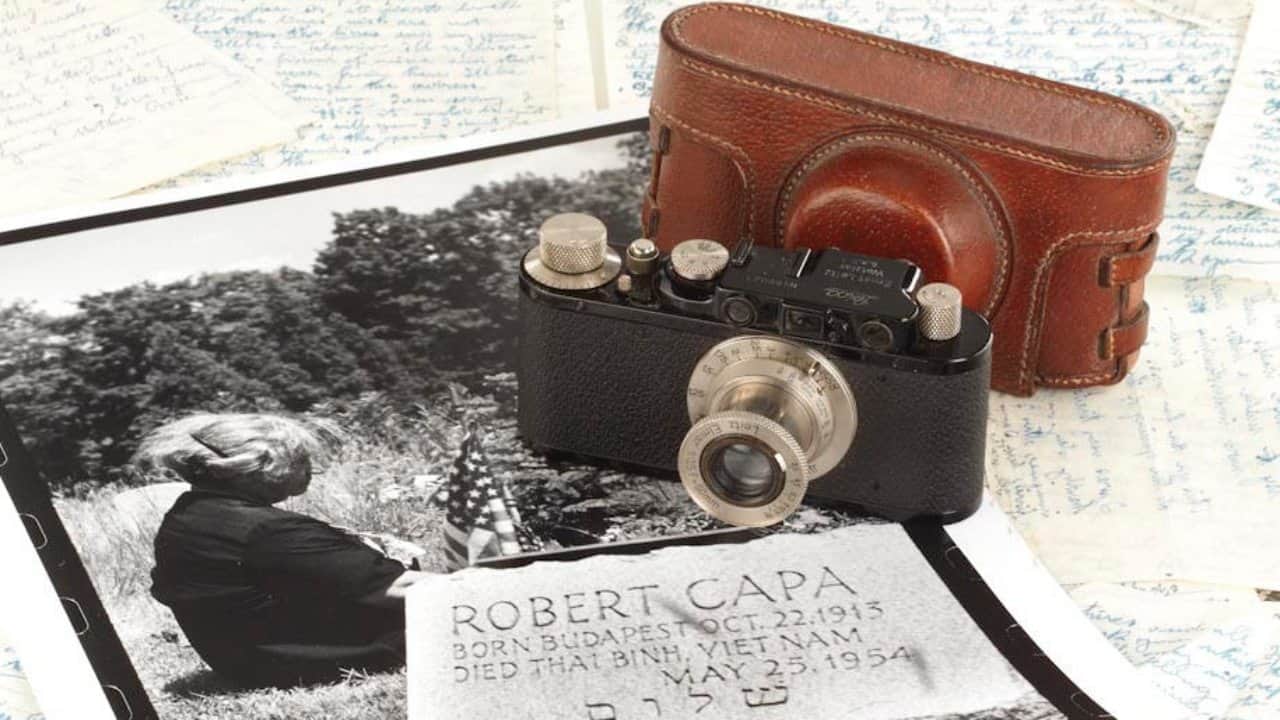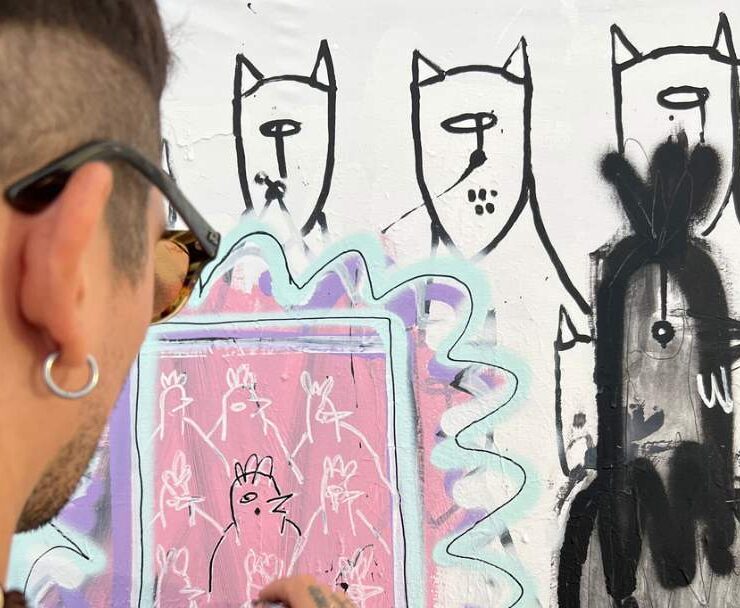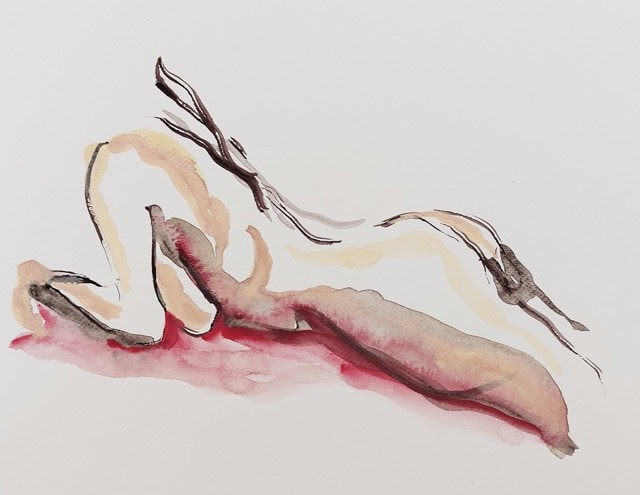War photography is one of the world’s most dangerous professions. While soldiers on the battlefield have a full field of vision, the photographer is often limited to what he sees through his lens.
Despite the obvious threat of being shot, war photography can be rewarding, and has in fact changed the course of history on occasion.
Images bring dimension and create an unbreakable audience-subject bond. Often, it is a portrait that makes the most striking impact. To most people, a photo of a large crowd will convey scale, but not emotion. Emotion is conveyed through faces, eyes and stances.
The Young Freedom Fighter Woman
The person in this photo is Erika Szeles, an apprentice chef at Hotel Béke in Budapest. Born at the beginning of World War II, she was only 15 years old when this photograph was taken in 1956. Erika did not live to see 16; she was shot by a Soviet solider seven days after being caught on camera.
Despite the photographer remaining unknown, this image has appeared on magazine covers and became an icon for the Hungarian Revolution.
But there is only so much you can say with a photo. Pictured here, Erika Szeles comes across as a young freedom fighter with a fierce look, ready to fight to the last bullet. But Erika never shot her machine gun; neither did she fight on the frontline. Instead, she was persuaded to become a nurse who saved the lives of freedom fighters.
So, was Erika a literal freedom fighter on the frontlines? Technically no. Does the addition of context render the image ineffective or at least less effective? Perhaps.
A story of an entire event through one image
Certain photojournalists claim that they are telling a story of an entire event through one image, the picture worth a thousand words. The problem with this claim is that it’s not true. There isn’t such a thing as a portrait that says everything about the person, just as there isn’t a photo that tells everything about one single event.
If that were true, a lot of event photographers would have very easy jobs. On the other hand, what is true is that certain images capture a moment so well, they capture the bravery of individuals, the heroism of movements, or the horrors of war.
A bejegyzés megtekintése az Instagramon
Mariano Hernanz Hernandez (@gente_madrid_sigloxx) által megosztott bejegyzés
The Greatest War Photographer
A master at all these and more was Robert Capa (born Endre Ernő Friedmann), a Hungarian photographer who travelled the world documenting conflict. He founded Magnum, an agency that unites the best photojournalists from all corners of the world. Magnum photographers have produced some of the world’s most iconic images.
A bejegyzés megtekintése az Instagramon
Robert Capa (@robert_capa_photography) által megosztott bejegyzés
“The Falling Solider”
One of Capa’s most known photographs is “The Falling Solider”. This is a photo claimed to have been taken of militiaman Federico Borrell García at the moment of his death in battle. He is falling alive, but the eerie dark shadow signals his dead silhouette. It is almost as if he is dancing with his own death, Garcia in white- his future in black.
This image clearly depicts the horrors of war, even without knowing the context of the Spanish Civil War. That person is someone’s father, husband, son, friend.
 There is just one small caveat to this incredible captured moment – this may not be the battle of Córdoba, and Federico Borrell Garcia may not have been shot dead. What is claimed to be going on in the photo may never have happened. Yet, the image is hailed as one of the greatest war photographs ever taken.
There is just one small caveat to this incredible captured moment – this may not be the battle of Córdoba, and Federico Borrell Garcia may not have been shot dead. What is claimed to be going on in the photo may never have happened. Yet, the image is hailed as one of the greatest war photographs ever taken.
And the reason I say may, is because the true context of the photo is known only to the subject and Capa. La sombra del iceberg, a 2007 documentary, traced the origins of the picture and concluded that the image was staged. But the International Centre of Photography argued that the image is authentic. Their argument was that the solider was posing and got shot. Some claim that the man in the photo isn’t even Borrell Garcia. So, who is right and does it matter?
When it comes to photography, the concept of truth is slippery. Some have argued that you create a lie, simply by snapping a picture. Just by framing your shot you choose what to include and what to exclude. Further, modern photo editing software allows for infinitely greater manipulation (or lies) to be told with a photograph. So, does knowing the context and editing details of the photo destroy the meaning?
Old and young untied against a common enemy
It comes down to what you choose to get from the image. Some will claim that Capa’s photo is fake. Some will say that girls didn’t fight in the Hungarian Revolution. But, at the same time, others will look at the photograph and extract the emotion it’s conveying, regardless of it being staged or not.
Famous Hungarian photographer Robert Capa took “The Falling Solider” to show the horrors of war. An unknown photographer took Erika Szeles’s photo to show the spirit of the Hungarian revolution: old and young untied against a common enemy.
A bejegyzés megtekintése az Instagramon
Colourised Piece of Jake (@colourisedpieceofjake) által megosztott bejegyzés






